Artist Interviews 2022
Bruno Catalano 
By Laura Siebold
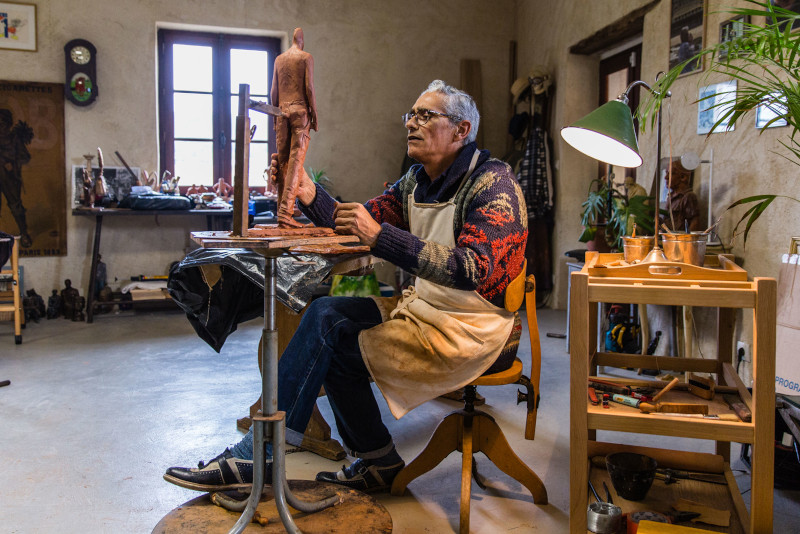
Bruno Catalano’s work is eye-catching, his style very distinctive. The French artist’s incomplete bronze sculptures draw you in, urging bypassers to pause in place.
Born in Morocco, the artist learned about the meaning of travel, about the feeling of being in-between cultures and places early on. Upon moving to Marseilles, France with his family, Bruno Catalano follows his artistic calling and starts turning his observations into art. Starting out with participation in a modeling and drawing workshop, Catalano moves on to learn clay practice by the Italian sculptor Bruno Lucchesi and finetunes his craft as a ceramic artist in his own studio. He creates numerous clay figures in his oven and starts selling them to curious travellers, thereby realizing “his vision of a nomadic humanity”. The artist becomes more widely known as a figurative bronze sculptor at the turn of the century and with the first public display of one of his bronze sculptures in Marseille. In 2007, the French gallery group Galeries Bartoux adds the artist to its renowned portfolio of artists.
In his interview, Bruno Catalano tells us about his fascination with traveling, and explores further main subjects of his work – absence, identity, and vulnerability, all of which are represented by a fragmented body carrying a suitcase.
Bruno Catalano's work is represented by Bartoux Gallery,
a French family-owned art gallery group specializing in contemporary art. The gallery has branches in New York, Miami, London, Monaco and all over France (Paris, Saint-Tropez, Honfleur, Cannes).
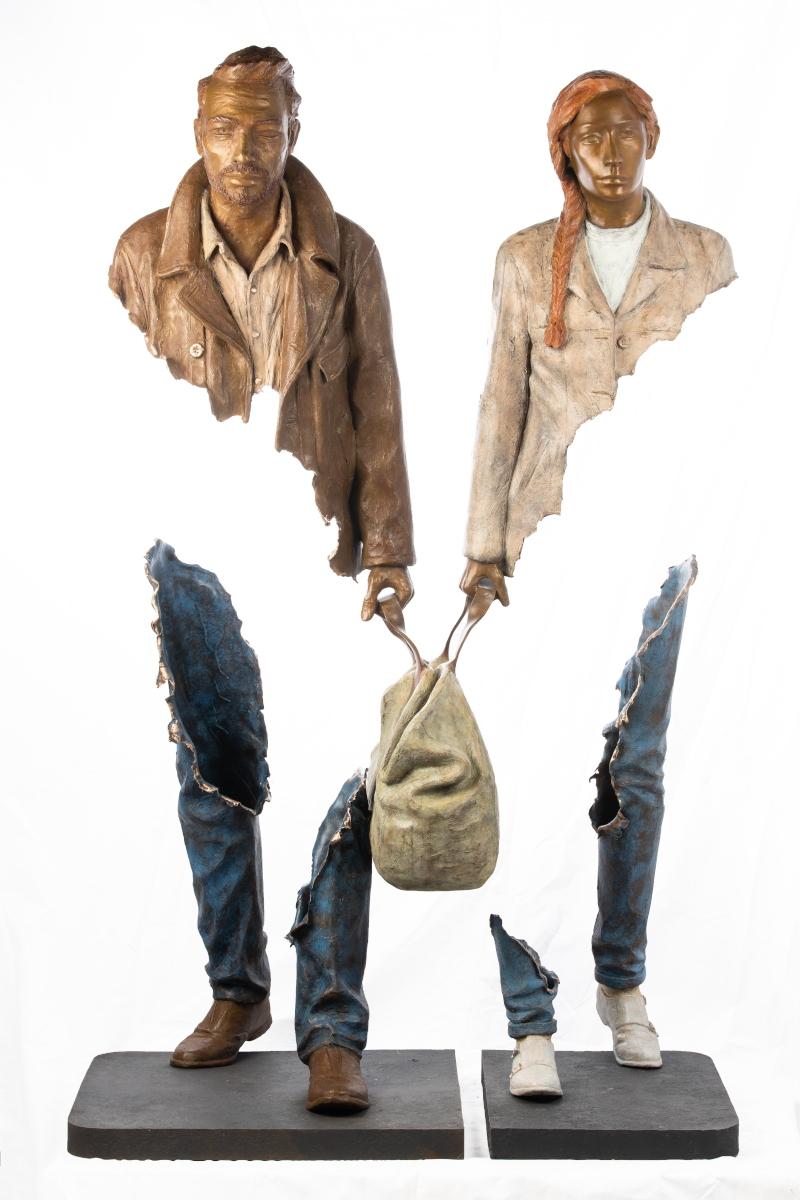
Mr Catalano, let me start by saying that I was very impressed by your "Les Voyageurs" bronze sculpture series on display at Galeries Bartoux in Honfleur, France. How long have you been working on this technique? When did you first start creating your sculptures?
I started modeling clay at the age of 30, and I immediately worked on figurative sculpture.
At the beginning, due to lack of financial means, my sculptures were only in clay, then as soon as I had some money to produce, I made molds of my works to realize them in bronze.
So, I have been working for more than 30 years on the concept of travelers, of a nomadic humanity.
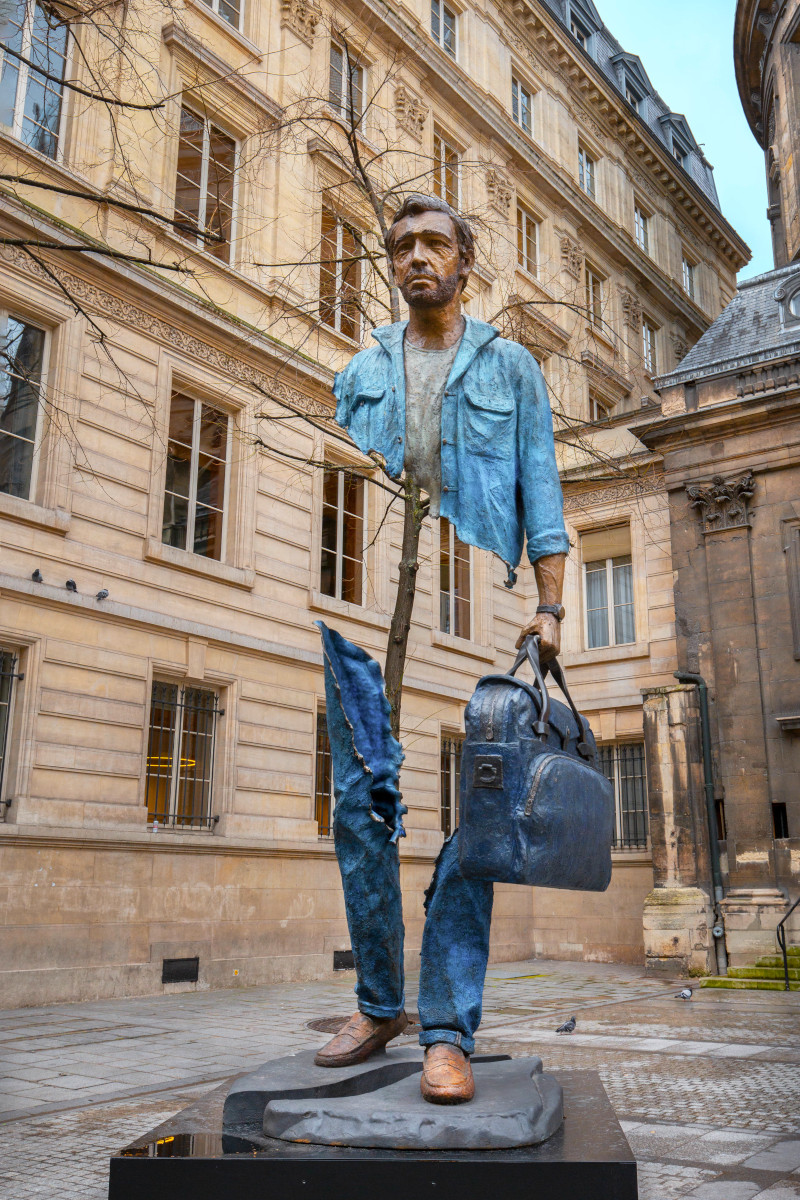
What fascinates you about travel?
I think that travel, immigration, is a source of benefits, innovation, dynamism, work, and cultural opening.
It also allows us to become aware of the problems of many countries in the world, to develop our empathy, our listening, and our curiosity.
But my sculptures are not only about travel or immigration, they are also about the adventure of our lives in general, our awareness, our vulnerability, our remorse, our regrets, all those things we had to part with on our journey to move forward. That's what fascinates me about the concept of "TRAVEL".
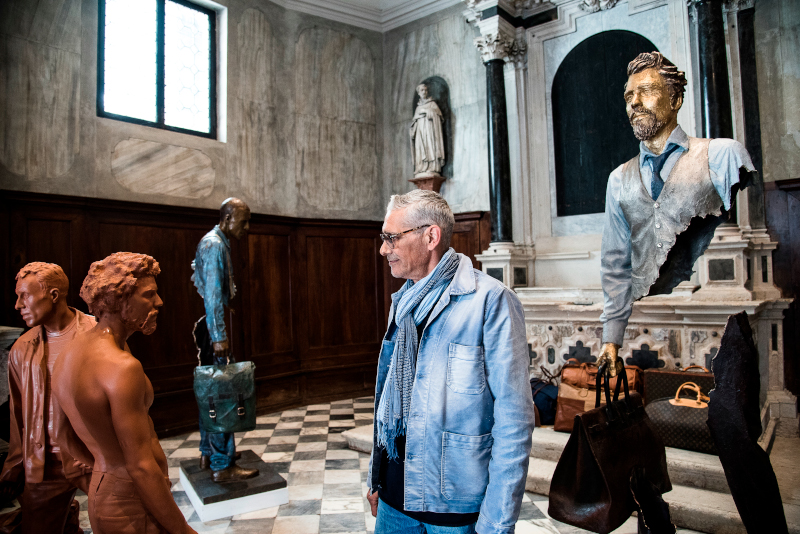
Your sculptures are missing essential pieces of their bodies. Is this a reference to the saying that we find parts of ourselves in foreign places, as well as leave certain parts in places while we travel? How come that each traveller is missing parts of the body, but always carries an object (a suitcase, a bag, or a similar object)?
In fact, the tearing on my sculptures happened a bit by accident during long hours of work.
Fifteen years ago, I was creating men who walk with a suitcase in hand, but full.
One day while I was founding a sculpture in my studio, with the help of my neighbor, it broke in the middle, at the level of the stomach. At the time I had turned my apartment into a small foundry, which is strictly forbidden today.
The next day, I had to participate in a small art fair in Aix-en-Provence, in the south of France, so I decided to repair this broken sculpture by welding the top and bottom of its body at the level of the case, which left a gap in the middle of the statue.
When I saw the result, I knew immediately that my next years of work would be devoted to this discovery, this formal tear. I had found my artistic path. When I presented this sculpture the next day at the exhibition, it sold immediately.
From the beginning, the suitcase was an integral part of my work. I am often told about the absence of the body but little about the suitcases that accompany each of my travelers, only the loaded luggage makes the link between the head that thinks and the feet that walk. It represents the weight of experiences, of life, and of very personal feelings such as memories, remorse, and regrets. It also reflects an attitude: to take one's suitcase and leave is also to know how to be courageous and determined.
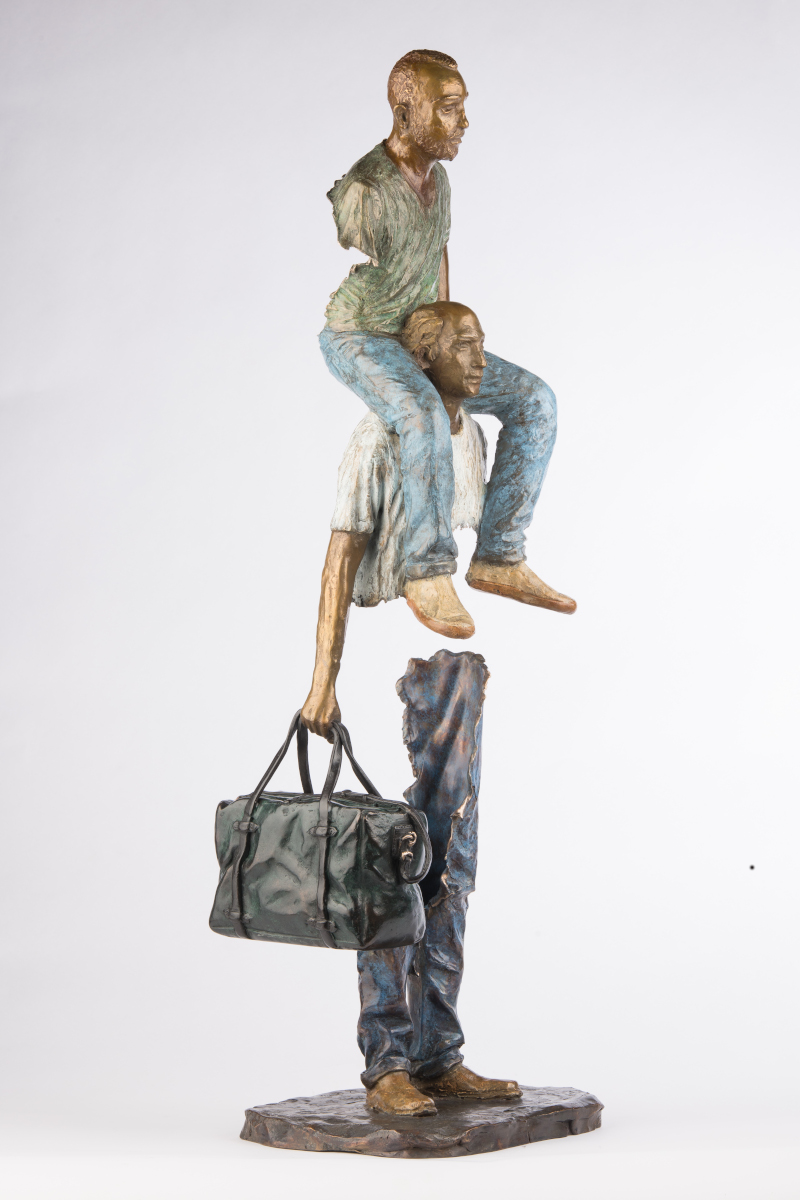
Did you have an artistic upbringing? When did you decide to become a sculptor and was your family supportive of your choice of profession?
I am self-taught. When I was 30, I took evening classes in a small workshop in Marseille for a year, but I learned everything on my own.
I quickly realized that I had a lot of work to catch up on, and that I had to do more than others if I wanted to make a living of it.
I quit my job as an electrician to devote myself solely to clay. For almost 20 years, I worked day and night to catch up.
My family did not understand this obsession (I do not come from an artistic background) and especially that I could not earn money with a normal job like everyone else.
It's true that I spent 20 years of my life locked up in my studio, without going out, because I had no money, I didn't sell anything, but I didn't care because my only pleasure was to model the clay.
This rhythm of work has remained the rhythm of my life.
I once read an ITW of Isaac Asimov who said: "I write for the same reason I breathe, because if I didn't, I would die".
That may sound a bit novel or presumptuous, but it's really what I experience and feel with sculpture.
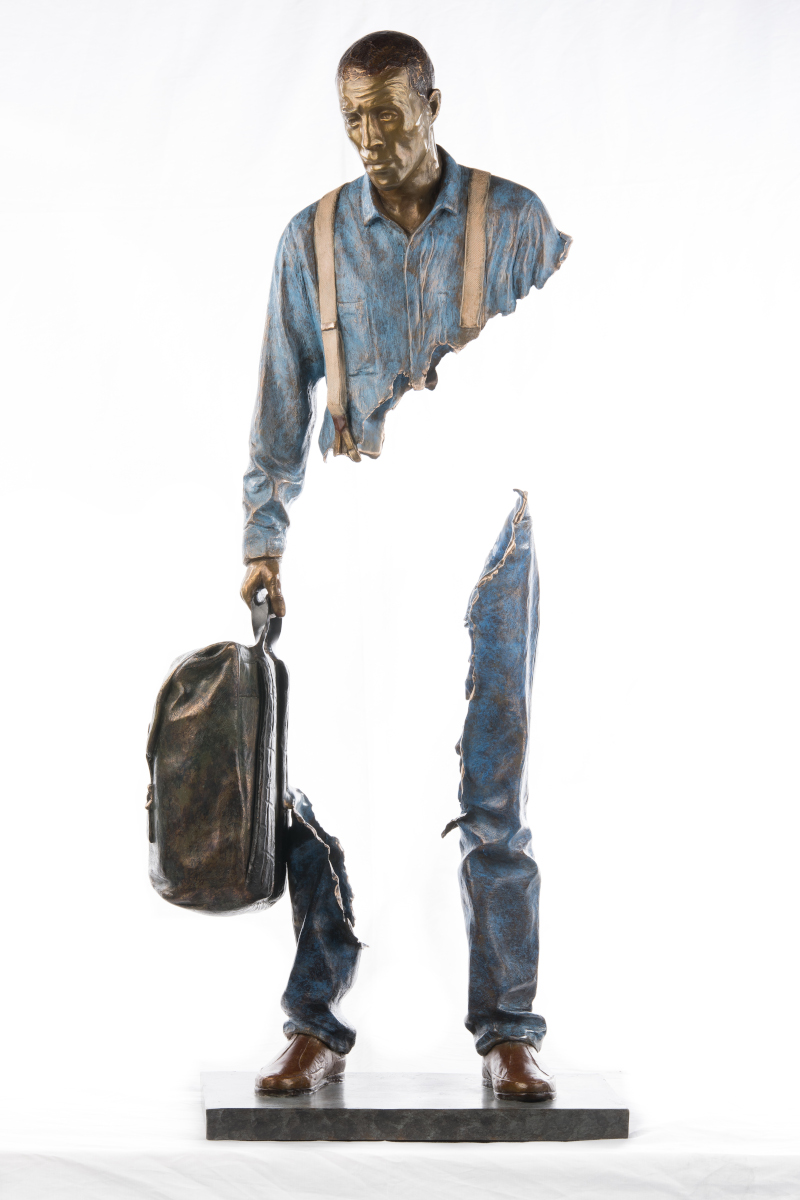
How would you characterize your art? Where do you position yourself as an artist and has your style changed throughout your career?
I make traditional bronze sculpture, my style does not change, and I have no ambition to change it, I make art to represent human beings, the contemporary people around me, I think that is my mission on this earth.
I will always remain very attached to the figurative.
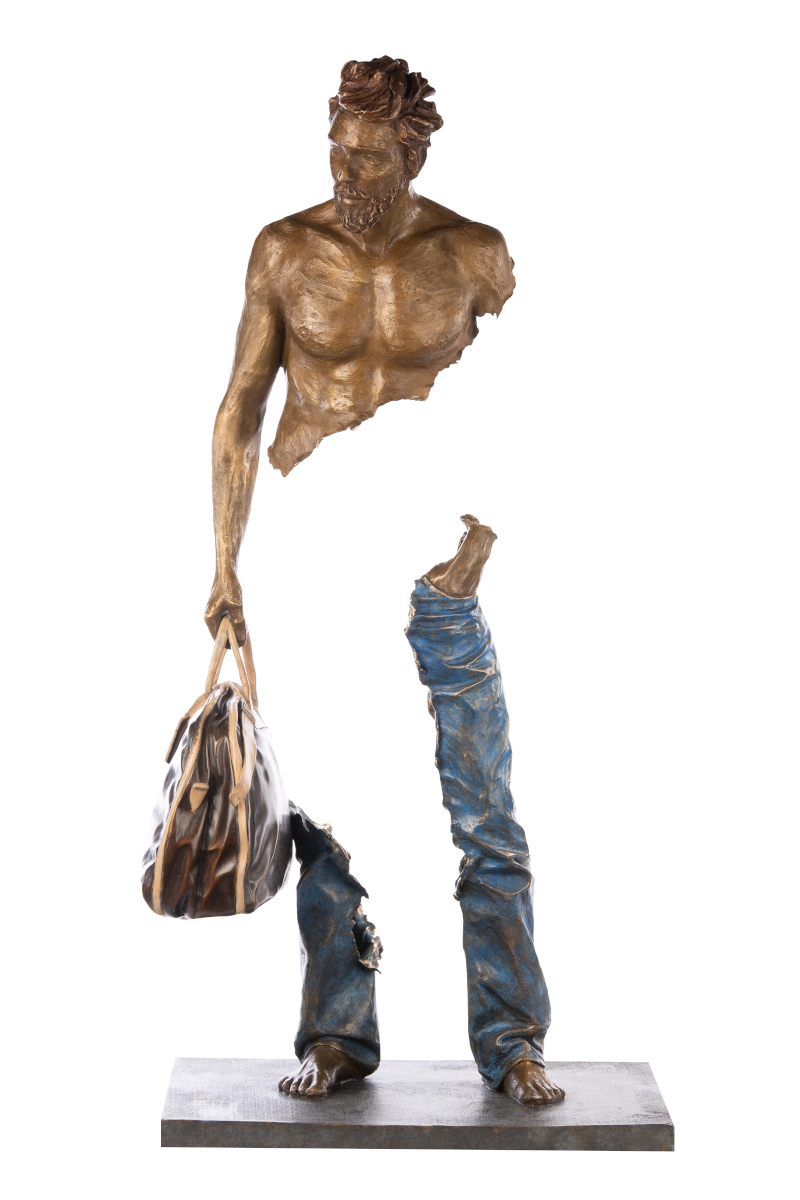
Can you describe the challenges your art imposes on its spectators? What can we learn from interacting with your art?
I think my sculpture challenges the eye because the viewer wonders, at first, how it holds, and then very often he recognizes himself in the tear.
You talk about the missing part of the body, but above all, what is important in my work is the gesture of tearing that I make on each sculpture when it is at the wax stage (just before the fusion stage) which makes each copy unique, since each tear is different.
The tear evokes someone who is not in his right mind, who has pain in him. Cramer, tear, these are words that were often used in my youth in Marseille. I think that absence, lack, separation are constitutive elements of any identity.
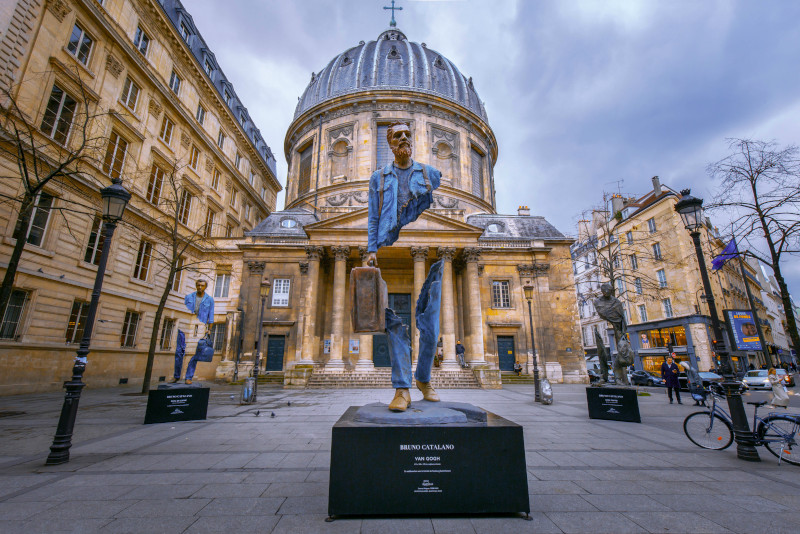
I read about the #brunocatalonoexperiencecontest in collaboration with Galeries Bartoux. Can you tell us a little about this contest and its outcome?
The choice of my models is very important, it is 80% of a successful sculpture, that's why I take a lot of time to choose them. They are people I get to know before sculpting them, and they become friends, they all have very interesting life stories.
When the lockdown came to France, I wondered how I would find my future models. That's when I created my instagram and the idea came to me while spending time on that network.
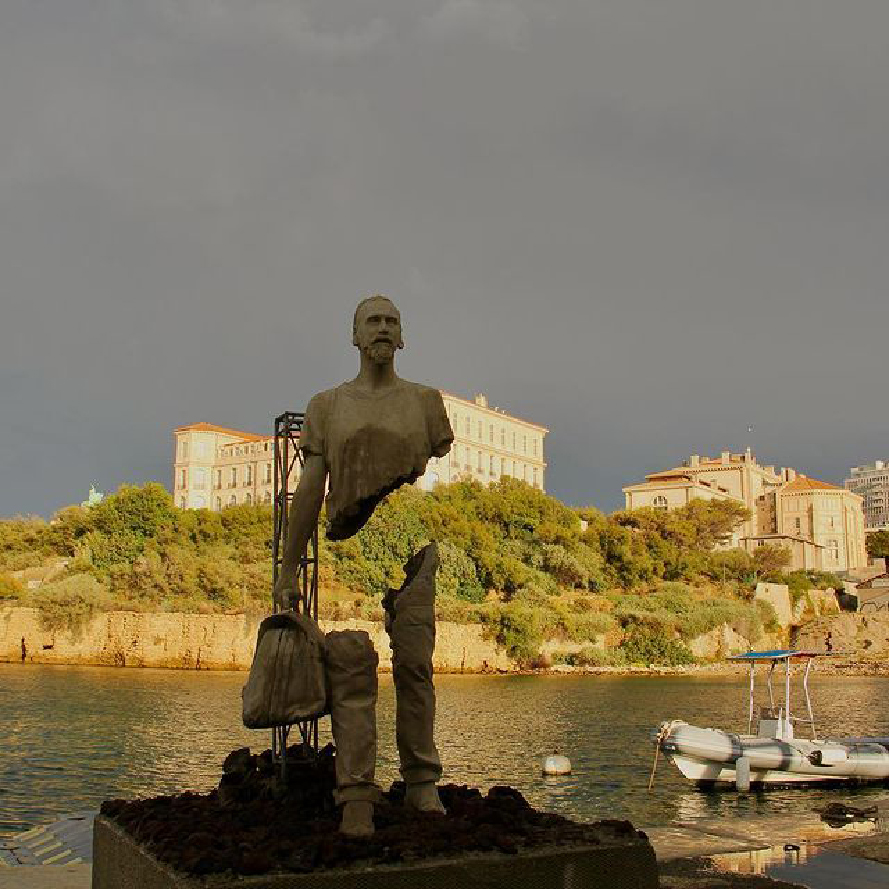
Travel is a universal subject, but we all travel differently. Is your art perceived differently in different countries?
No, I think the theme of travel is universal.
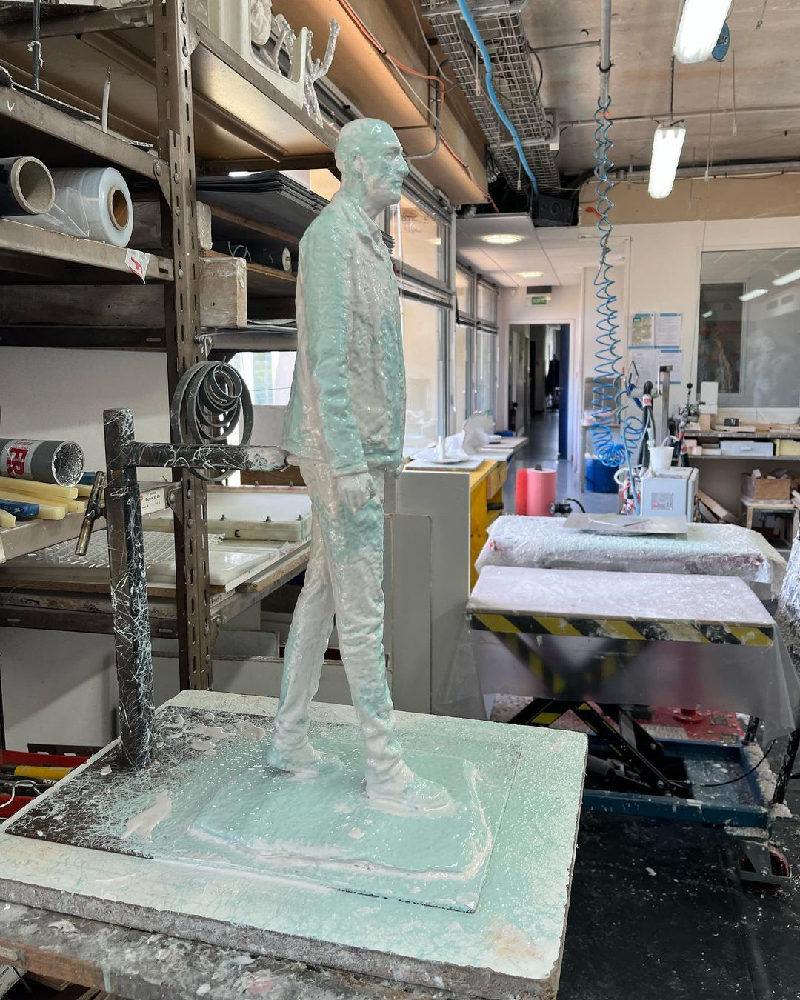
What has been your favorite artwork to this day and why?
Rodin, the best sculptor by far since the beginning of time, his exceptional skill allowed him to acquire another extremely rare quality, that of giving life to his models.
Indeed, one always expects a Rodin sculpture to move or speak, so precise are the features, one has the impression of being able to probe the soul of his models.
If you could place your sculptures anywhere in the world, where would you like them to be set up and why?
I would like to continue to expose my works in cities. Art is used above all, to make the link between people, and I think that to take it out of museums, to propose it to the greatest number, does good to the spirit and the soul!
|
|

